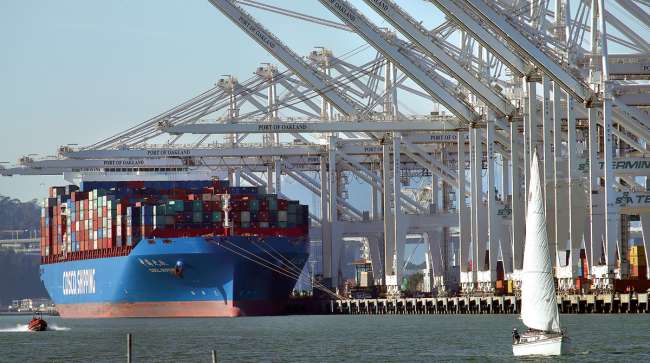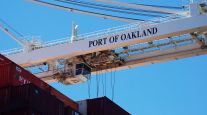Staff Reporter
Oakland Port Truck Management Plan Nears Final Approval

The Port of Oakland’s West Oakland Truck Management Plan has moved one step closer to final approval.
The port’s governing board on April 25 endorsed the initiative, which aims to reduce freight haulers’ impact on residential areas. The plan contains strategies that are meant to limit disruption from truck traffic and truck parking, increase safety along freight corridors and educate drivers on preferred routes and parking restrictions.
The plan targets West Oakland, the neighborhood ensconced by the port. Trucks funnel through West Oakland to retrieve or drop off cargo. Richard Sinkoff, director of environmental programs and planning, has estimated that 2,000 to 3,000 heavy trucks call on the port every day.

The plan proposes updating designated truck routes and improving signage, increasing truck parking enforcement through potential fine increases and instituting precautions such as high-visibility crosswalks and pedestrian safety zones. The signage is meant to help truck drivers navigate to the port, adjacent freeways and nearby businesses. Important city routes for trucks moving to the port and the many factories in the area include 7th Street, Adeline Street and Market Street.
“It’s our responsibility to be a good neighbor in Oakland,” said Andrea Gardner, an environmental planner at the Port of Oakland who helped develop the truck management plan. “With this plan, we’re keeping our promise to minimize the impact of containerized cargo transportation in Oakland.”
The plan targets the trucks that haul containers to and from the port, as well as trucks that serve the buildings that are under development at the former Oakland Army Base nearby.
Truck parking spots total about 3,200 on Port of Oakland property. However, truckers sometimes will park on neighborhood streets to dodge the port’s fee.
The Port of Oakland, which encompasses a seaport and airport, moves 99% of the containerized goods that flow through Northern California. The port imported more than 74,000 industry-standard 20-foot equivalent units in March.
Port and city leaders developed the plan with the help of five community workshops in West Oakland that were held over 18 months. Community leaders showed port representatives certain “hot spots” in the neighborhood that are characterized by heavy truck traffic.
“We listened closely to the West Oakland community to understand their concerns about truck traffic,” City of Oakland Planner Patricia McGowan said. “Then we collaborated with them to shape a plan that addresses those concerns.”
Draft West Oakland Truck Ma... by Transport Topics on Scribd
Besides presenting issues associated with safety and congestion, trucks moving through neighborhoods create air-quality problems. According to a study from Rutgers University, diesel exhaust contributes to particulate matter air pollution, which has been linked to asthma, cancer, heart attacks and lung disease.
“The plan is intended to improve the quality of life for people living and working in West Oakland,” Gardner said.
The port is budgeting $2.35 million over five years to implement the agenda. Any additional funds would come from the developers working on the city’s portion of the former Oakland Army Base.
The plan now moves to port Executive Director Chris Lytle and Oakland City Administrator Sabrina Landreth for final approval.



